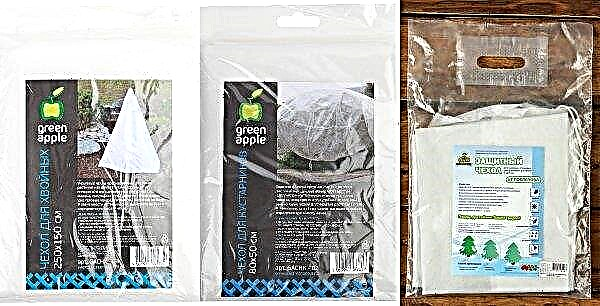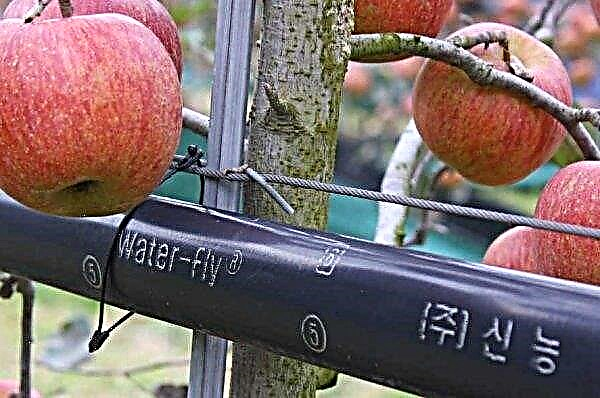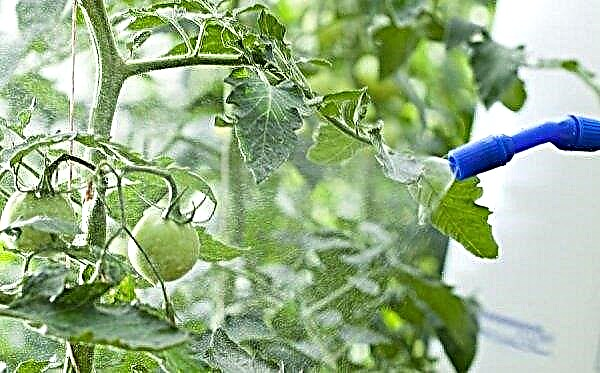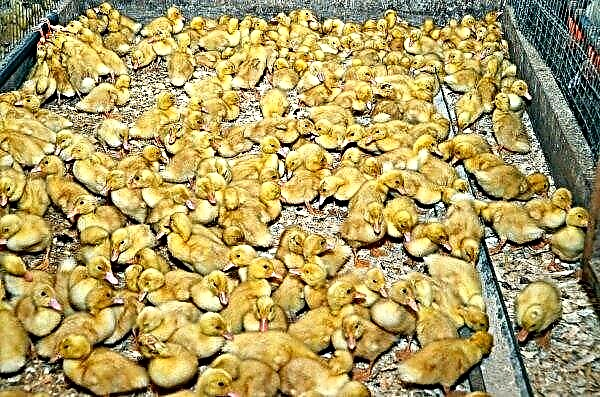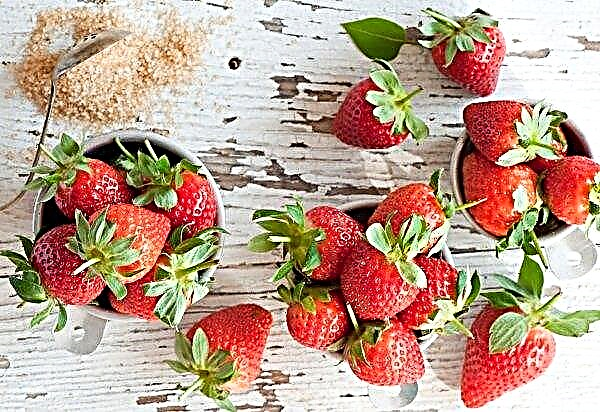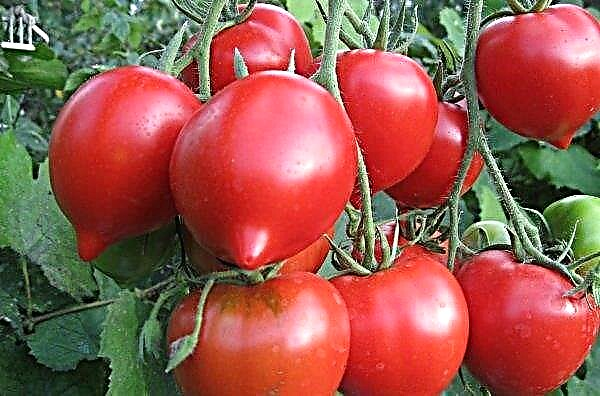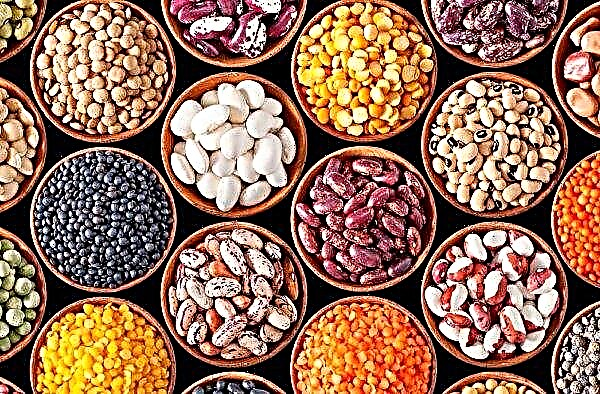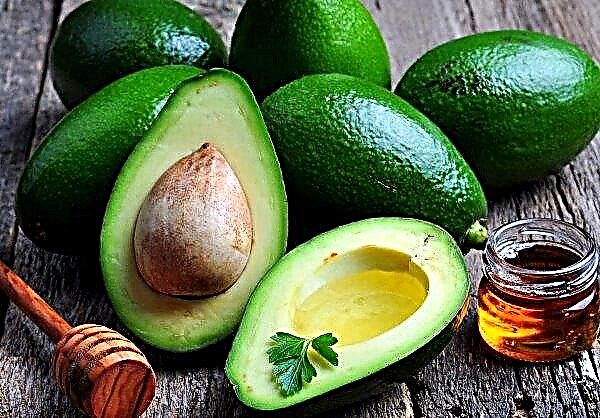Hydrangea is a flowering shrub that pleases with bright inflorescences throughout the summer season. In order for the plant to have a healthy appearance and bloom for a long time, one should take seriously the choice of place and timing for planting. It is very important to follow the basic rules of planting and agricultural technology to obtain the expected result.
What hydrangea loves
Before planting hydrangeas, it is necessary to take into account the preferences of the culture.
The gardener needs to keep in mind the following nuances:
- Since the rhizome of hydrangea grows widely, the plant requires sufficient space on the site.
- Hydrangea prefers moisture. The culture needs frequent watering, but to reduce evaporation from the soil, it is recommended to introduce mulch from pine needles into the trunk circle. It should be remembered that watering must be carried out so that there is no stagnation of water.
- Culture needs light and protection from direct sunlight. Hydrangea grows and blooms well in areas with diffused sunlight, as well as in partially shaded areas.
- Hydrangea prefers well-drained nutrient soil, with high acidity, containing clay particles without excess lime. The soil composition can be improved with compost or humus.

What is the hydrangea root system?
Hydrangea rhizome is located shallow in the soil. The roots are characterized by a fibrous structure. The root shaft is not very pronounced, it is lost in the density of the lateral processes, which partially deepen, but are more horizontal. The considered part of the culture usually reaches a length of 0.4-0.6 m, and a width of more than 0.7 m.
Planting hydrangea implies special care for the root system:
- Its densely branched structure requires a lot of free space in the hole with the ground.
- The lateral processes of the roots are very sensitive to mechanical damage. This fact should be taken into account when placing the plant in the planting pit and with further loosening of the soil.
- The insufficient depth of the root system indicates the need for its protection by planting the crop at a certain distance from the rapidly growing representatives of the flora.

Is hydrangea growing in the shade
Opinions of experts about planting in shady areas are somewhat different. Some argue that in the shade hydrangea will not be able to demonstrate all the beauty of flowering - density, color saturation. On the other hand, such a place is safer for hydrangea, since the “open” sun can burn the crop, the flowers quickly grow smaller and crumble ahead of schedule.
It is permissible to plant hydrangea next to other higher plants, but you cannot “hide” it under large-sized trees or a vineyard. The best option for the bush in question is an openwork shadow, which will protect this culture from sunburn and provide it with the opportunity to bloom beautifully and continuously.
What time of the year is it best to plant in open ground
Hydrangea survives well after planting both in spring and autumn. The choice of season depends on the weather conditions of the area. In temperate regions, it is permissible to plant seedlings in mid-spring. In northern Russia, it is necessary to plant a flower culture in May, protecting the plant from possible return frosts. It is possible to place hydrangea in open ground in early autumn only in areas with a mild climate and warm winters.
Important! The September planting of the crop is recommended only for planting material with a sufficiently developed root system.
How to plant hydrangea in open ground
Before planting the plant in question, it is necessary to carry out the following steps:
- site selection;
- well preparation;
- determination of the distance between plants during group planting;
- familiarization with the technology of planting at different times.

Choosing a landing place
Choosing a site for hydrangea, it should be borne in mind that the bush in question loves the scattered sun and partial shade. It is recommended to plant the crop on the eastern side of the territory, so that in the first half of the day the plant is well lit, and at noon it is hidden from direct sunlight.
Did you know? In the 19th century, a popular way to enrich the soil with iron, in which hydrangea bushes grew, was to place horseshoes or nails in a hole with earth during planting or to bury other metal objects at the first signs of chlorosis in an adult bush.
When choosing a place, it is necessary to take into account the composition and natural features of the soil. The earth should be fertile, saturated with humus and clay intersperses. When planting hydrangeas, sandy soils should be avoided, and red soil is not recommended. The soil must be acidified (pH 5.2–6.0).

Deficiency of nutrients in the plant can be traced on soils with an alkaline reaction. This can lead to yellowing and early shedding of leaves. It is desirable that the soil is well-permeable and moderately moist, but in no case should you choose wetlands.
Landing pit preparation
The next step after choosing a territory is digging a hole. An adult bush reaches a sufficiently large size, so the size of the pit should have the appropriate parameters. For small varieties, the hole can be dug 50 × 50 × 50 cm in size, and for large ones - 80 × 80 × 80 cm.
It is also necessary to take into account the fact that the pit needs to be refueled, so you should not worry about the large dimensions. Before fertilizing, the recess, where 3 buckets of water are also poured, should be left overnight, giving the soil time to absorb moisture well.
The next morning, you need to make a nutrient mixture consisting of soil, peat, humus and sand (2: 2: 1: 1). It is also recommended to add organic mixed with mineral fertilizers (25 g of urea and potassium sulfate, 65 g of superphosphate). To increase the acidity of the soil, pine needles should be repaired.
The distance between hydrangeas during planting
If you plant bushes in groups, you must consider the distance between them. Each variety has its own parameters, so the distance will be different. For large-leaved hydrangea, the distance should be about 1.2–1.6 m, and for panicled hydrangea - 1.5–2.5 m.
If the gardener plans to plant a bush near other plants, then you need to indent from crops by 2.3–3 m.To plant hydrangea as a hedge, it is recommended to dig a trench 0.9–1.1 m wide. For early flowering, experts advise digging out planting holes with a shorter distance from each other (0.7–0.8 m). After a few years, you can thin out the stands.
Dates and rules of landing
Features of hydrangea planting may also depend on the choice of season. Many gardeners use the lunar calendar to calculate the required dates. Despite the fact that many experts recommend planting hydrangea in the spring, it is also possible to plant in the fall and summer. To do this, you must follow certain rules.
In summer
Planting this season is acceptable for hydrangea with a closed root system. The only difficulty is more care. Summer planting is best done in the first half of June. The bush begins to bloom for 2-3 years. With the premature formation of peduncles, they are recommended to be cut.
The process of summer planting involves the following steps:
- Dig a hole with the parameters 0.5 × 0.5 × 0.5 m. The hole should be prepared a month before planting.
- To add soil composition: soil, peat, humus and sand (2: 2: 1: 1).
- When installing a seedling in a pit, it is necessary to carefully straighten the roots without damaging them.
- Having covered the bush with soil, it should be slightly compacted.
- Pour the plant with 2-3 buckets of water and mulch the earth.

It is not recommended to plant hydrangea during its flowering, but if there are no other options, then all peduncles should be cut. This procedure is necessary in order for the bush to take root well, and not spend energy on opening buds.
In the spring
The indicated time of the year is considered the best option for planting hydrangeas. Spring manipulation is more suitable for the northern part of Russia. The optimal time is April or May.Sequencing:
- Prepare a pit (0.5 × 0.5 × 0.5 m).
- Pour fertilizer from soil, peat, humus and sand into the hole (2: 2: 1: 1)
- For a plant with an open root system, you should prepare a hill from a soil mixture, with a closed one - this procedure is not required.
- The seedling is set on a hill on which the roots must be carefully straightened. This option is used for an open root system.
- The pit is filled with soil so that the root neck is visible 3-4 cm from the ground. This will protect the plant from decay. Next you need to tamp the earth a little.
- The bush is abundantly watered with 2-3 buckets of water.

Fall
Hydrangea with a well-developed root system is usually planted at this time. For the regions of the middle lane, the best time to land is September, and for the south of the Russian Federation this procedure must be postponed until October.
Hydrangea planting in autumn is as follows:
- After choosing a place and digging a hole at least 50 × 50 × 50 cm in size, you should add a soil mixture to it.
- 2 buckets of water are poured into the hole.
- Before you remove the seedling from the pot, it should be watered, and after that - placed in a pit. For a plant with an open root system, it is necessary to form a hill from the soil mixture in the hole, and install a bush on top.
- The pit needs to be filled with soil, without deepening the root neck.
- The plant should be abundantly watered.
- The last stage - laying a layer (5 cm) of mulch from peat and coniferous litter.

Subsequent cultivation and care
Even if the planting is carried out in compliance with all the rules, hydrangeas in the future must provide proper care.
Therefore, so that bush cultivation does not cause special problems, you need:
- regulate soil moisture;
- timely fertilizer and mulch;
- to trim;
- organize preparations for the winter.
Watering
Hydrangea is considered a moisture-loving crop. This means that the plant requires regular watering. Arid and hot territory is not suitable for this bush, as the plant will not have enough moisture, as a result of which it will not develop well and may even die.
In favorable weather, the shrub should be watered once a decade with 15–25 liters of water. In the heat, the frequency of the procedure increases - every 7 days, the amount of fluid - up to 20 liters.
Important! Winter resistance of hydrangea decreases with a lack of moisture in the autumn. Therefore, if there is not enough rainfall at this time of the year, you need to take care of regular watering.
The procedure is carried out in the morning or after sunset, pouring water into the trunk circle. Having finished watering, you can loosen the earth a little 5 cm deep around the bush. To prevent rot, sometimes you need to add potassium permanganate to the irrigation fluid (the solution should be pale pink, without crystals of the drug).
Fertilizer
If fertilizers were added to the planting pit during planting, then the next two years the plant will not need to be fed. The procedure is carried out in two stages: before the end of June, you need to make “acidic” fertilizers (potassium sulfate), and from the second summer month until mid-autumn - potassium phosphorus (superphosphate).
The introduction of nutrients necessary hydrangeas can be divided into three stages:
- Complex mineral fertilizers are embedded in the ground in the first half of May (30 g per 10 liters of water). You can also add organics in the form of mullein infusion (1:10). Repeat procedure - after 1.5 weeks. Such top dressing is necessary for growth.
- Potash and phosphorus. Two weeks before flowering (first half of June), it is necessary to apply liquid top dressing: 70 g of superphosphate and 45 g of potassium sulfate, diluted in water. Watering the bush with such a mixture, you can provide lush flowering.
- The above top dressing is also recommended to be added to the peak of flowering in order to extend it and to ensure the laying of young buds.

Mulching
If the procedure in question was not carried out immediately after landing, then it can be carried out at another time. Mulch plays the role of protecting the root system from overheating, and also inhibits the growth of weeds. The organic product is presented in the form of wood bark or peat (layer - 7 cm).Experts recommend introducing pine needles, which will deter pests, and also keep the soil acid necessary for the plant. The procedure is performed in May or autumn, before the first frost.
Pruning in autumn, spring, summer
All varieties of hydrangea tolerate a haircut.
This procedure is necessary for:
- maintaining the necessary shape of the bush;
- decorative enhancement;
- health improvement;
- conversion to a standard plant.
Did you know? Buddhists believe that hydrangea leaf tea has magical powers. During the annual celebration of the birth of Buddha, people pour a drink on a statue of a newborn deity. And after the ceremony, believers drink flower tea in the family circle.
Spring haircuts usually take place in the first half of March (in the southern regions) or in mid-April (for the cold regions of Russia). Each variety of hydrangea has certain features in pruning.For large-leaved varieties, it is recommended to carry out an incomplete haircut to maintain dense flowering in the summer.
Spring pruning can take place this way:
- Old, deformed branches and dried flower stalks are removed.
- Thinning is carried out until the buds open.
- Every 4 years - a rejuvenating haircut (cutting all branches at a right angle at a height of 45 cm from the earth's surface).

Features of spring haircut hydrangea paniculata:
- The procedure is performed until the buds open.
- Remove old shrub fragments.
- Shorten all branches to 3-5 buds.
- All shoots that grow inward must be removed.

Tree hydrangea:
- The first 3 years the bushes do not need a haircut. Only sanitary pruning is permissible (if necessary).
- The subsequent full-fledged haircut involves the removal of old, damaged, sick and weak shoots, dry inflorescences.
- Young shoots shorten up to 3-5 kidneys.
- After 5–7 years, spring anti-aging pruning is performed, shortening all branches and leaving stumps (up to 10 cm).

Autumn haircut hydrangea is also considered a mandatory procedure. It is needed to separate the work on the formation and improvement of the bush. All old, damaged and growing inside the bush branches are removed, and young shoots remain intact. Optimal dates are mid-autumn. At this time, the air temperature should be + 5 ... + 10 ° С. For frost-resistant varieties, it is permissible to carry out the procedure in November.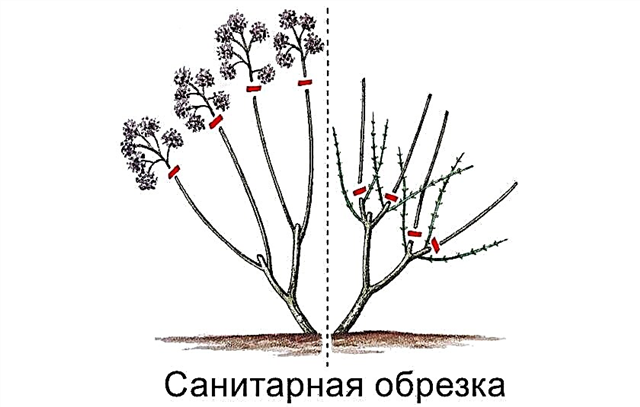
In the northern regions, autumn pruning cannot be carried out for the first three years of cultivation, since the young plant does not have enough strength to survive the winter. Only sanitary cleaning is allowed if necessary. A summer cut of hydrangea is also possible - it is sanitary pruning, as well as the removal of dry inflorescences. If the procedure was not performed in mid-July (or after flowering), it is recommended to postpone this procedure until next year.
Winter preparations
The procedure is carried out in mid-October. It is necessary to protect young shoots from freezing.
The process is accompanied by such actions:
- The plant is cultivated with soil and mulched with a mixture of manure and peat.
- The stems are bent to the earth's surface, covered with sawdust, dry leaves. On top of the set box with holes.
- In April, the design can be disassembled.
- Dimensional shrubs are recommended to be tied, placed under a frame shelter, exceeding the size of hydrangea by 10 cm, and fallen leaves can be placed inside as a thermal layer.

Diseases and Pests
Hydrangea is quite resistant to attack by various pests, but, like other cultures, it can be affected by ailments and parasite insects.
One of the most common plant diseases is powdery mildew. To eliminate this pathology, Fundazol should be diluted in water (20 g per 10 l) and irrigate the culture. An effective means is a solution of Bordeaux mixture (80 g per 10 liters of water).
Aphids are a common pest for hydrangea. A good counteraction is the use of garlic tincture. To do this, you need to pour 250 g of crushed spicy product into 10 liters of water. After 48 hours, in the resulting infusion add 50 g of grated laundry soap. The components must be mixed thoroughly. Spraying is carried out 1 time in 7 days until the pest disappears.

Hydrangea is a flowering bush that requires special attention when planting. Proper care of the crop is very important for the formation of a healthy plant, and involves regular watering, fertilizing, cutting, preparation for wintering. If the gardener performs all the actions correctly, according to certain agrotechnical rules, then he will receive an attractive bush densely decorated with flowers.

